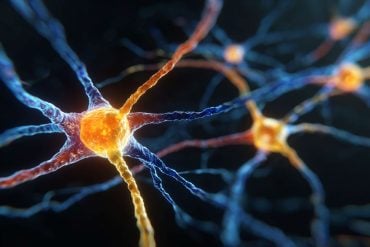Summary: A new study reveals that aggression and self-harm share a biological foundation in the brain’s response to early-life trauma. Researchers discovered that trauma increases activity in calcium channels within a neural circuit connecting the nucleus reuniens and hippocampus, amplifying pain processing and impulsive behavior.
This hyperactivation predisposes individuals to both self-injury and aggressive outbursts later in life. The findings offer the first mechanistic explanation linking trauma, pain sensitivity, and maladaptive behavior—opening doors for more precise treatments for trauma-related disorders.
Key Facts
- Shared Circuit: Early trauma overactivates a brain pathway linking the nucleus reuniens and hippocampus.
- Calcium Channel Role: Increased calcium channel activity drives susceptibility to both aggression and self-harm.
- Pain Connection: Emotional and physical pain appear to act as gateways to these behaviors through altered brain signaling.
Source: Virginia Tech
Aggression and self-harm often co-occur in individuals with a history of early-life trauma—a connection that has largely been documented by self-reporting in research and clinical settings.
Adding to this connection, individuals treated for self-inflicted injuries are five times more likely to engage in excessive aggression.
What’s happening in the brain to tie these two behaviors together?
A new study by Sora Shin, an assistant professor in the Fralin Biomedical Research Institute at VTC’s Center for Neurobiology Research, has identified a brain circuit that changes after trauma.
The study was published Nov. 5 in Science Advances.
“Our findings suggest that aggression and self-harm may appear to be very different behaviors, but actually, they could share a common neural basis,” Shin said. “Both may exist along a continuum rooted in how the brain processes pain signals.
Shin and her team investigate how childhood adversity leads to changes in the brain that result in maladaptive adult behaviors. Her previous research examined how early trauma contributes to binge eating later in life and how stress influences emotional eating.
She had long wondered about causes of aggression and self-harm. Is it anxiety or depression? Or could something deeper — perhaps the way the brain processes pain — be at the core?
Using mice models, Shin found that both early-life trauma and overactivity of a specific calcium channel in neurons along the brain pathway linking the nucleus reuniens and the hippocampus increase the risk of impulsive aggression and self-injurious behavior.
The nucleus reuniens connects the prefrontal cortex and the hippocampus and is involved in memory, emotion, and decision-making. Dysregulation of this region has been implicated in impulsivity and anxiety-related behaviors.
In this study, Shin identified specific calcium channels within this pathway that are critical to the development of aggression and self-harm.
“Trauma actually increased the channel activity,” said Shin, who also holds an appointment in Virginia Tech’s Department of Human Nutrition, Foods, and Exercise.
“It’s changed the brain and molecular properties and caused hyperactivation of the neuron. Excessive activity in that circuit increases susceptibility to aggression and self-harm.”
The research also found that pain, including emotional pain, may serve as a gateway for these behaviors to emerge.
By identifying the neurological connection between early trauma and its impacts, the study offers a deeper understanding that goes beyond the subjective, self-reported assessments.
“Aggression, especially pathological aggression, is a critical social problem that can have serious consequences in our society,” Shin said.
“Self-harm is also a pressing concern across many clinical populations. Our study provides more open, active insights about the neural circuit basis that underlies these outcomes and may ultimately guide the development of more effective therapies.”
“Dr. Shin’s work epitomizes the power of combining ground-breaking technological innovation with conceptual advances to address health challenges that not only have tremendous impact on individual’s personal lives but society at large,” said Michael Friedlander, the executive director of the Fralin Biomedical Research Institute and Virginia Tech’s vice president for Health Sciences and Technology.
Funding: Shin’s research was funded by grants from the National Institute of Mental Health, part of the National Institutes of Health. The work was also supported by the FBRI Seale Innovation fund, the Integrated Translational Health Research Institute of Virginia, and a postdoctoral fellowship from the South Korean government.
Other authors on the paper include Jane Jung, postdoctoral associate in Shin’s lab, and former research associate In-Jee You.
Key Questions Answered:
A: Both behaviors appear to share a common neural pathway that becomes overactive after early-life trauma, suggesting they stem from similar disruptions in how the brain processes pain.
A: The study identified a pathway between the nucleus reuniens and the hippocampus—key regions for emotion, memory, and decision-making—where trauma heightens calcium channel activity in neurons.
A: By pinpointing the neurobiological roots of aggression and self-harm, researchers can move beyond self-reported data to develop targeted therapies that address the underlying brain dysfunction caused by trauma.
About this trauma, aggression, and self-harm research news
Author: John Pastor
Source: Virginia Tech
Contact: John Pastor – Virginia Tech
Image: The image is credited to Neuroscience News
Original Research: Closed access.
“Thalamo-hippocampal pathway determines aggression and self-harm” by Sora Shin et al. Science Advances
Abstract
Thalamo-hippocampal pathway determines aggression and self-harm
Aggression and self-harm are maladaptive coping strategies that often occur in individuals with a history of early life trauma (ELT), yet their underlying neural mechanisms remain unclear.
Here, we identify L-type calcium channel (LTCC)–expressing thalamic nucleus reuniens (RE) as a critical component regulating both behaviors. ELT-induced excessive LTCC activity in vesicular glutamate transporter 2 (vGlut2) RE neurons and its corresponding effects on persistent neuronal activation contribute to increasing susceptibility to aggression and self-harm.
Activation of vGlut2 RE neurons projecting to ventral hippocampus (vCA1), but not medial prefrontal cortex, promotes these behaviors in control mice.
Furthermore, we found that RE neurons modulate two distinct subsets of vCA1 neurons, with one projecting to the hypothalamus to drive aggression and another to the basal amygdala to mediate self-harm.
Our findings uncover how LTCC functions in the RE-to-vCA1 neural pathway increase the risk of aggression and self-harm, highlighting potential therapeutic targets for mitigating destructive behaviors following early adversity.







